Abstract
The Wiener-Lee-Schetzen method for the identification of a nonlinear system through white gaussian noise stimulation was applied to the transient light growth response of the sporangiophore of Phycomyces. In order to cover a moderate dynamic range of light intensity I, the imput variable was defined to be log I. The experiments were performed in the normal range of light intensity, centered about I0 = 10(-6) W/cm2. The kernels of the Wierner functionals were computed up to second order. Within the range of a few decades the system is reasonably linear with log I. The main nonlinear feature of the second-order kernel corresponds to the property of rectification. Power spectral analysis reveals that the slow dynamics of the system are of at least fifth order. The system can be represented approximately by a linear transfer function, including a first-order high-pass (adaptation) filter with a 4 min time constant and an underdamped fourth-order low-pass filter. Accordingly a linear electronic circuit was constructed to simulate the small scale response characteristics. In terms of the adaptation model of Delbrück and Reichardt (1956, in Cellular Mechanisms in Differentiation and Growth, Princeton University Press), kernels were deduced for the dynamic dependence of the growth velocity (output) on the "subjective intensity", a presumed internal variable. Finally the linear electronic simulator above was generalized to accommodate the large scale nonlinearity of the adaptation model and to serve as a tool for deeper test of the model.
Full text
PDF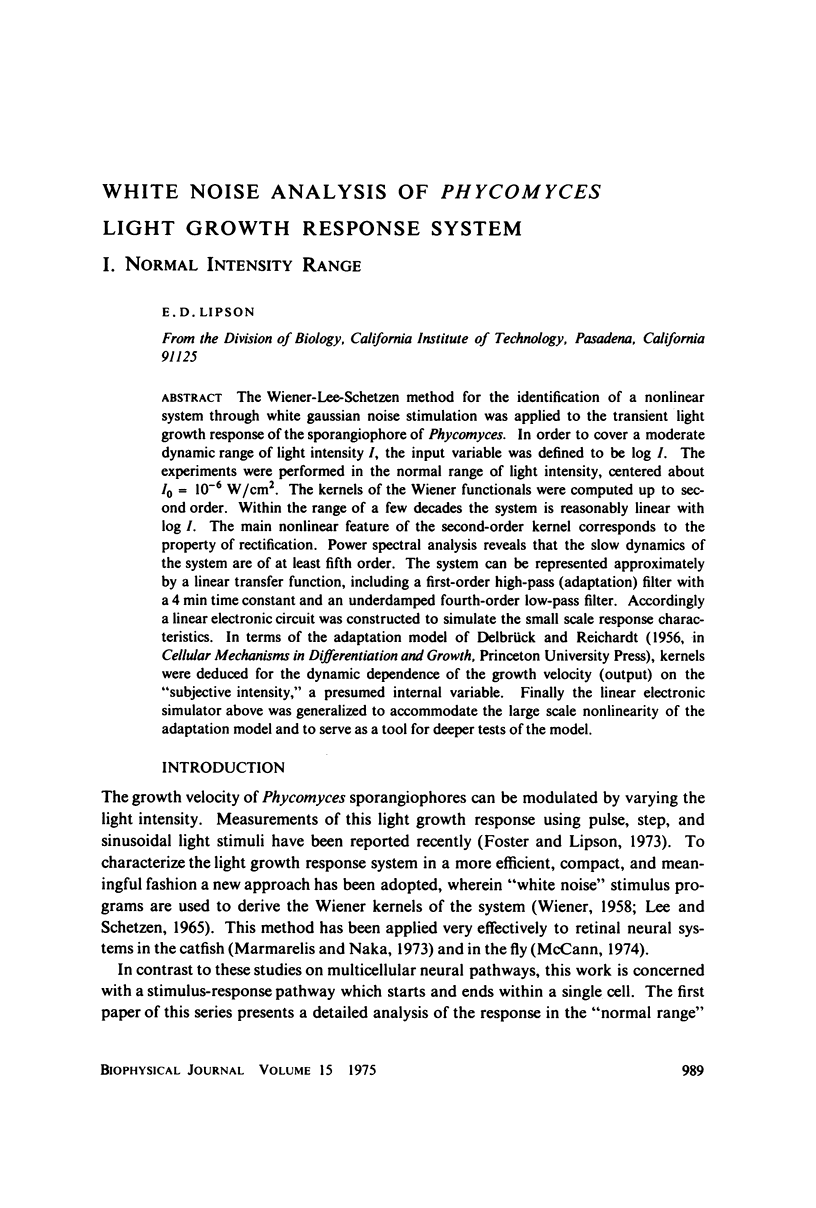
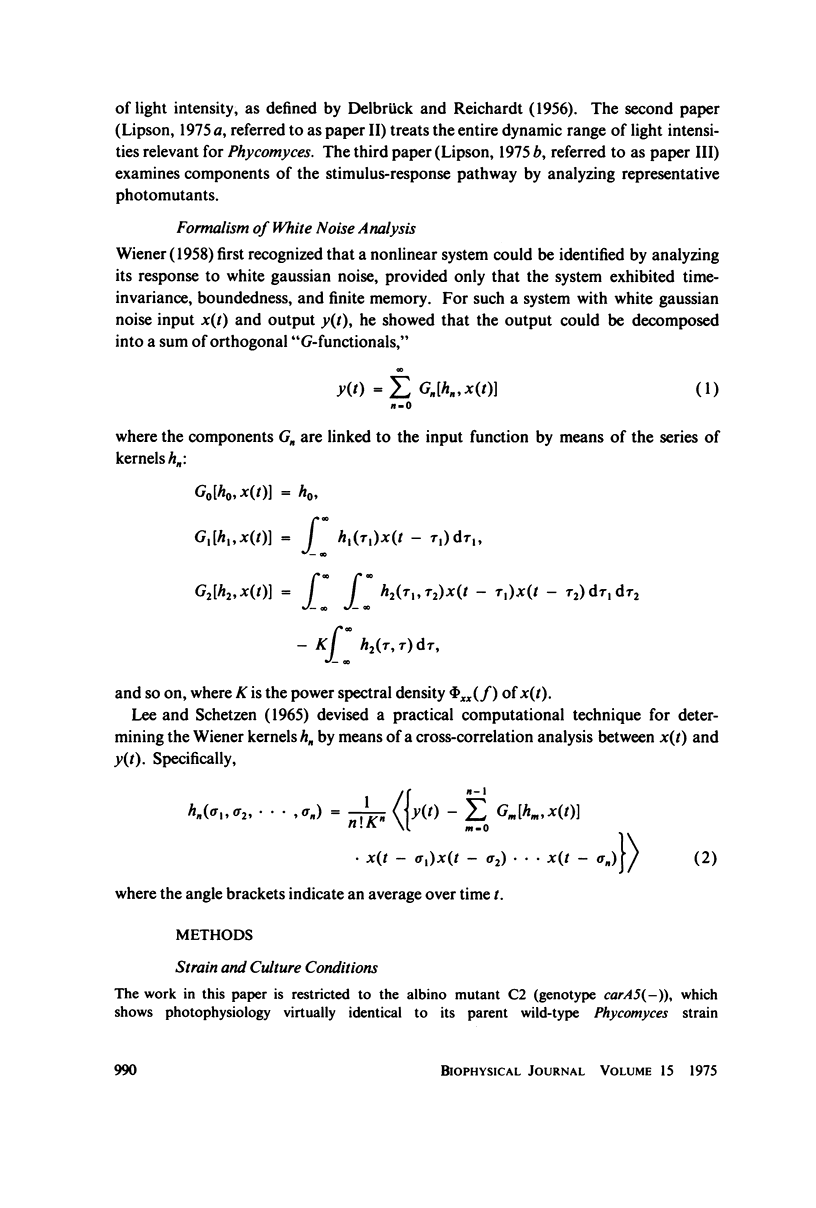

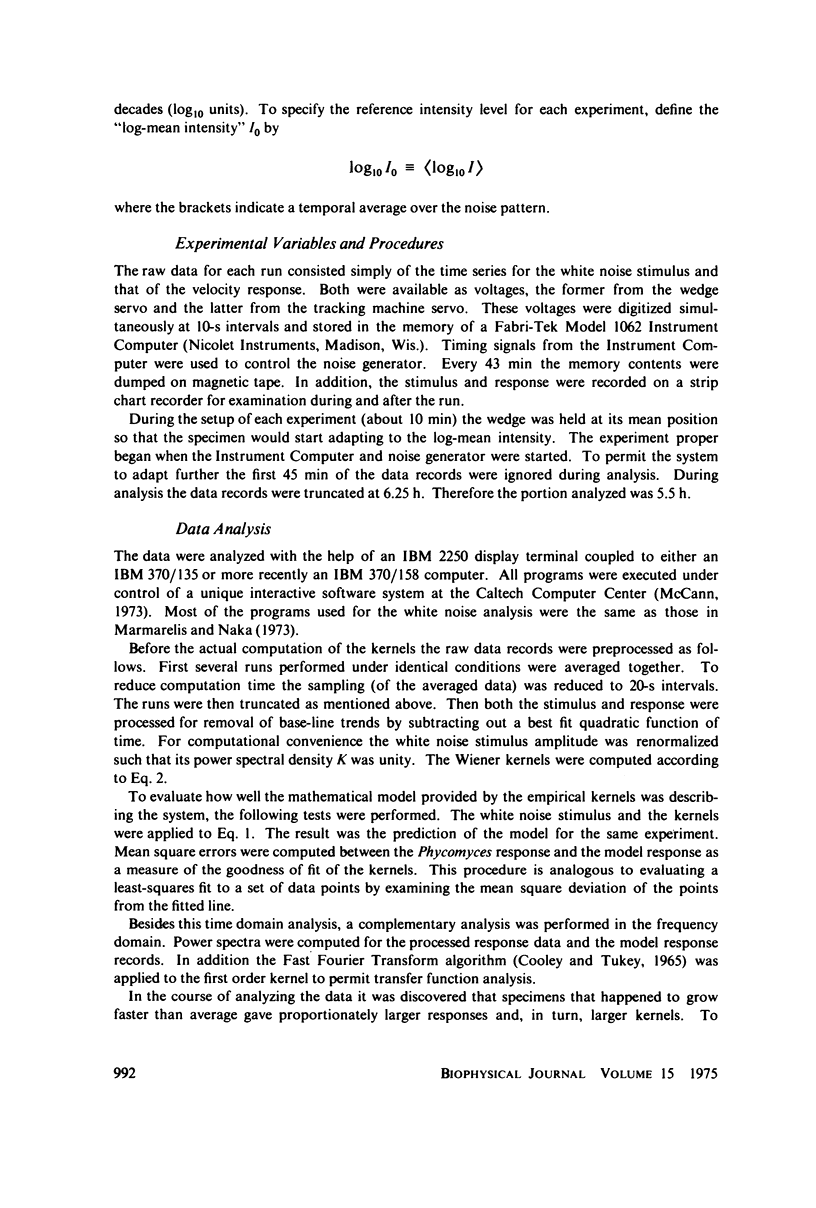
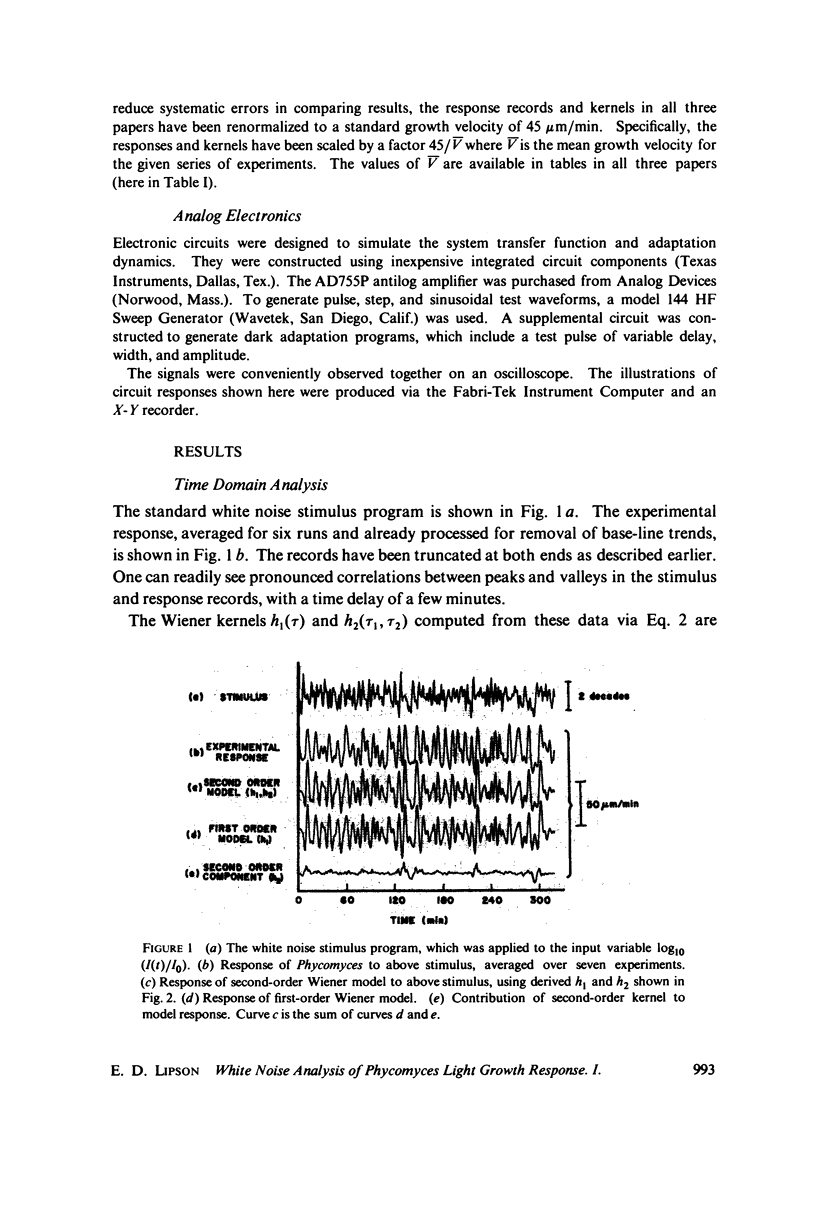
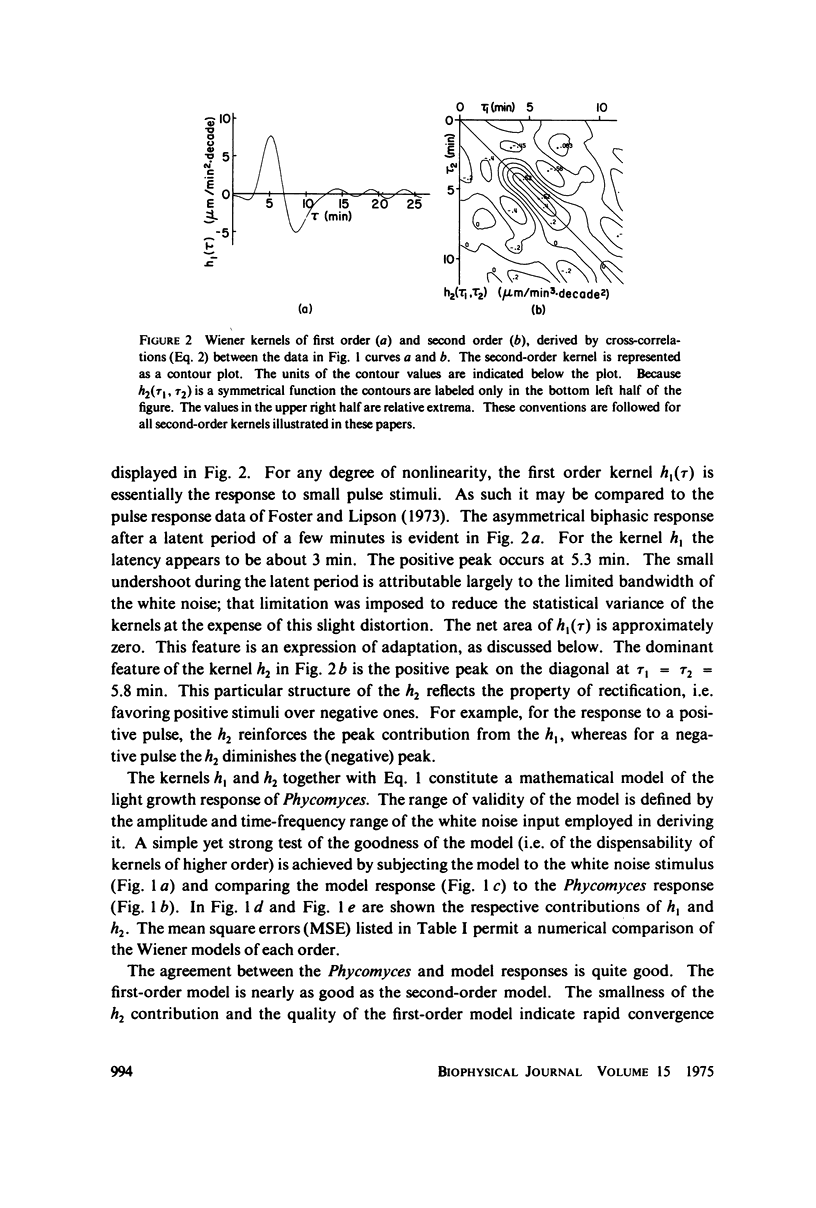
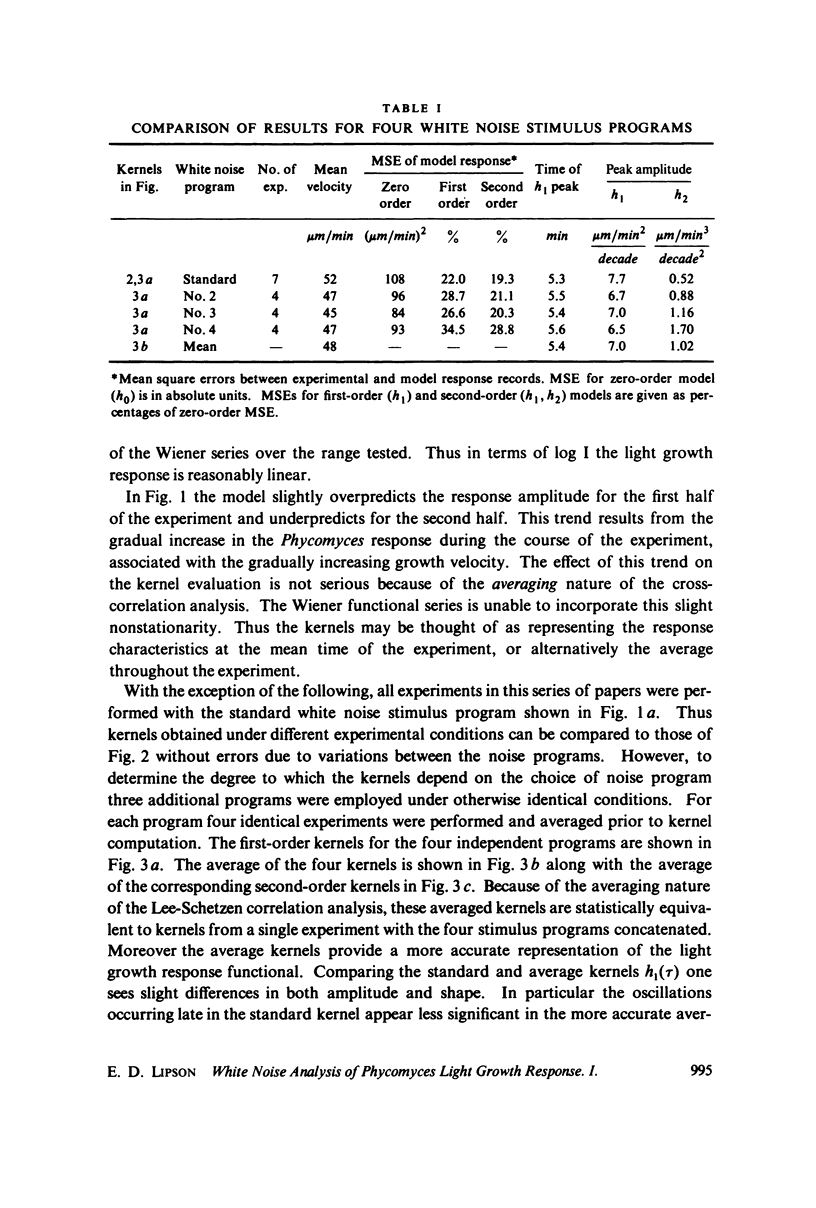
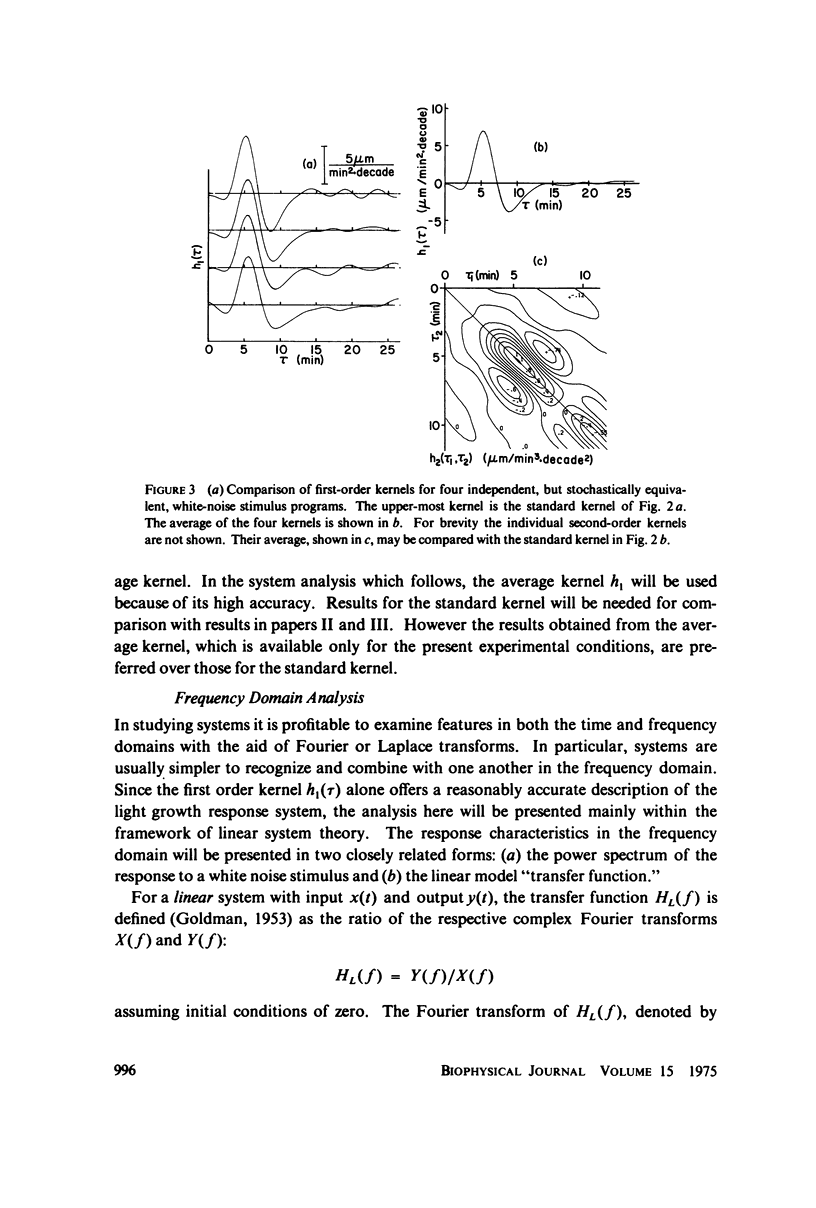

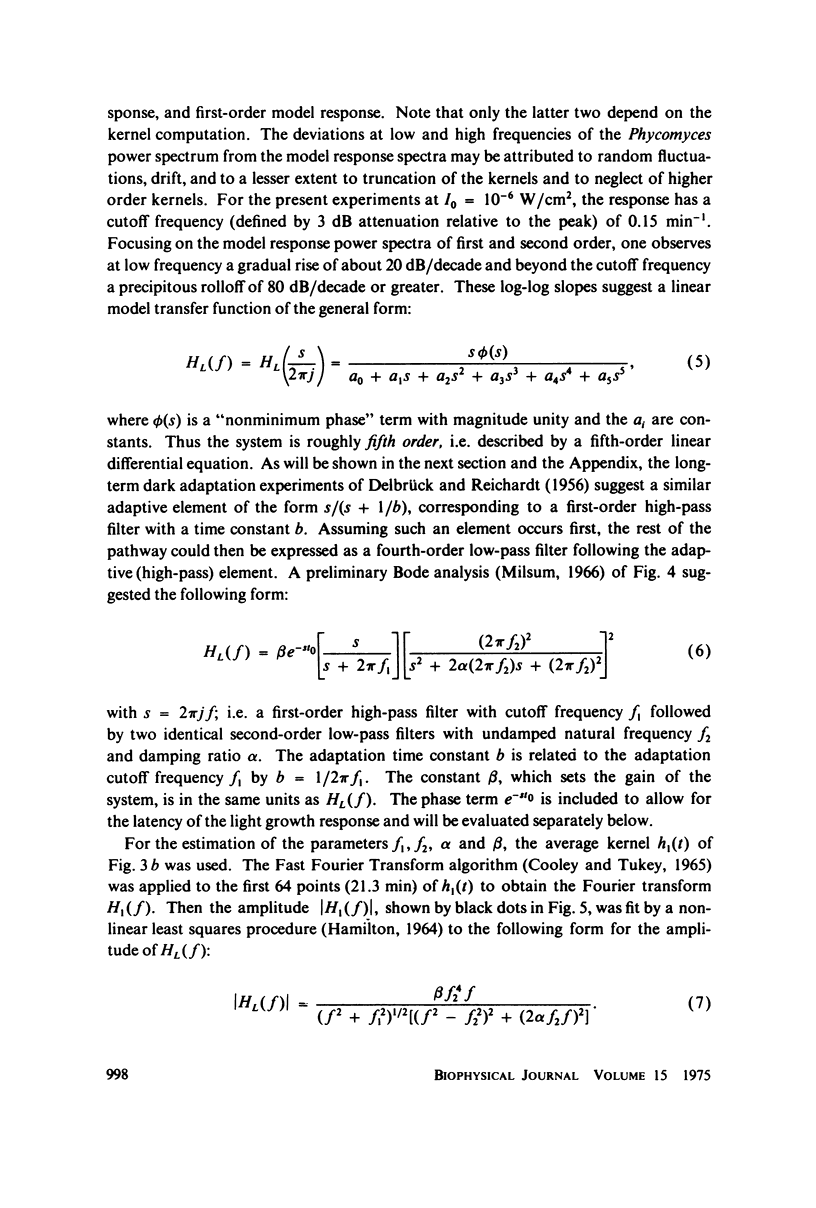
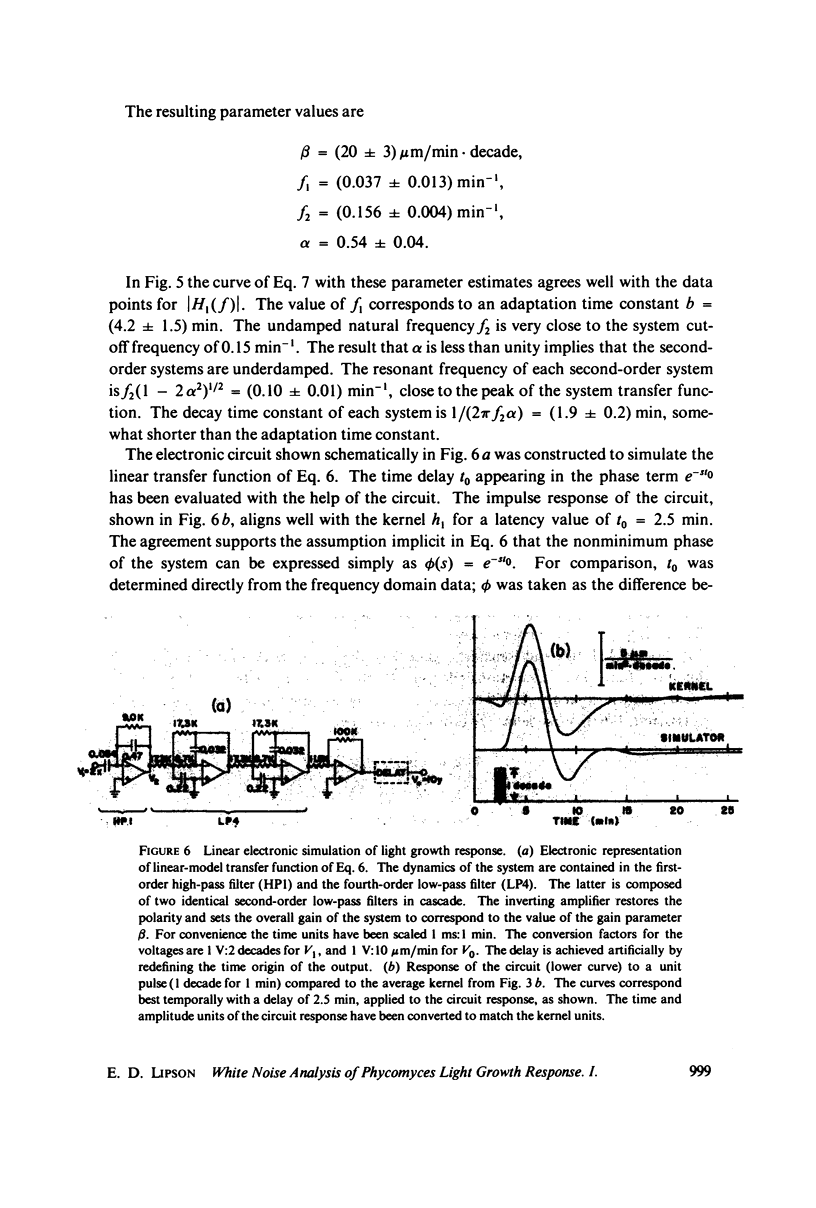
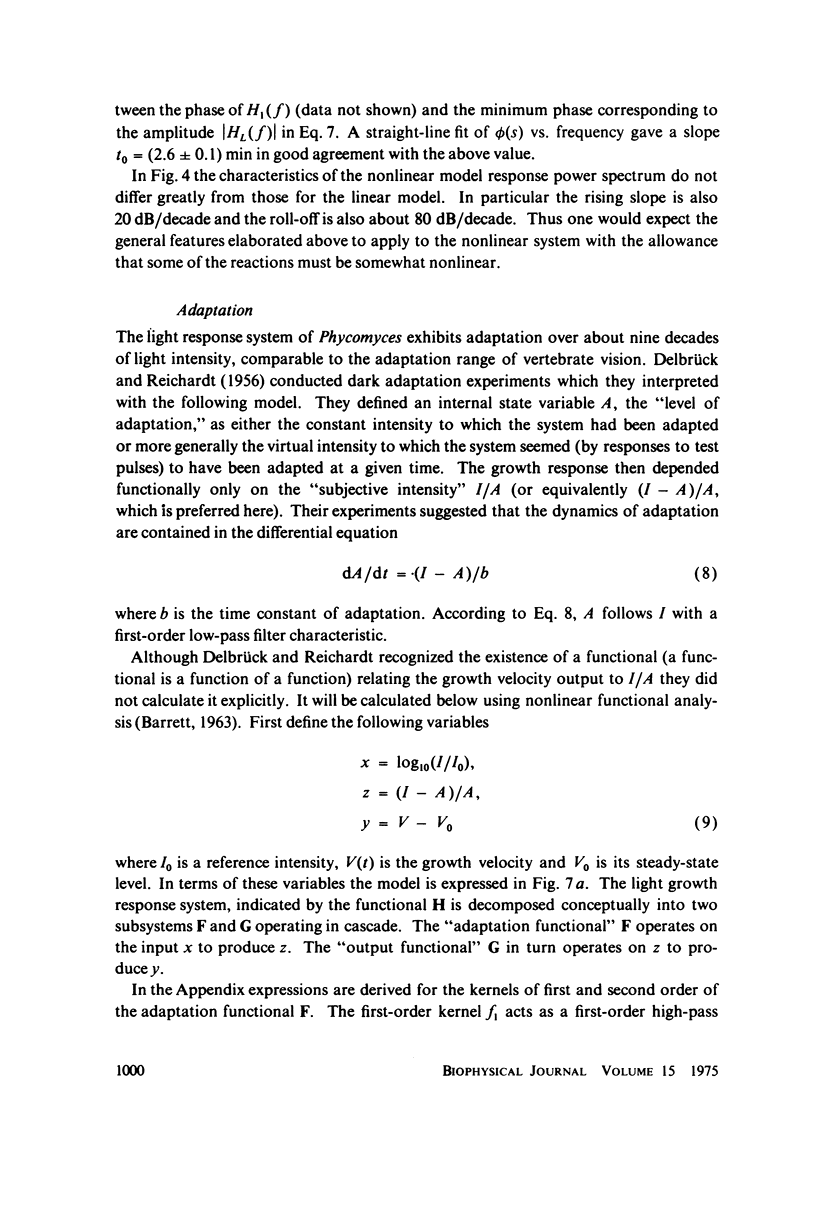
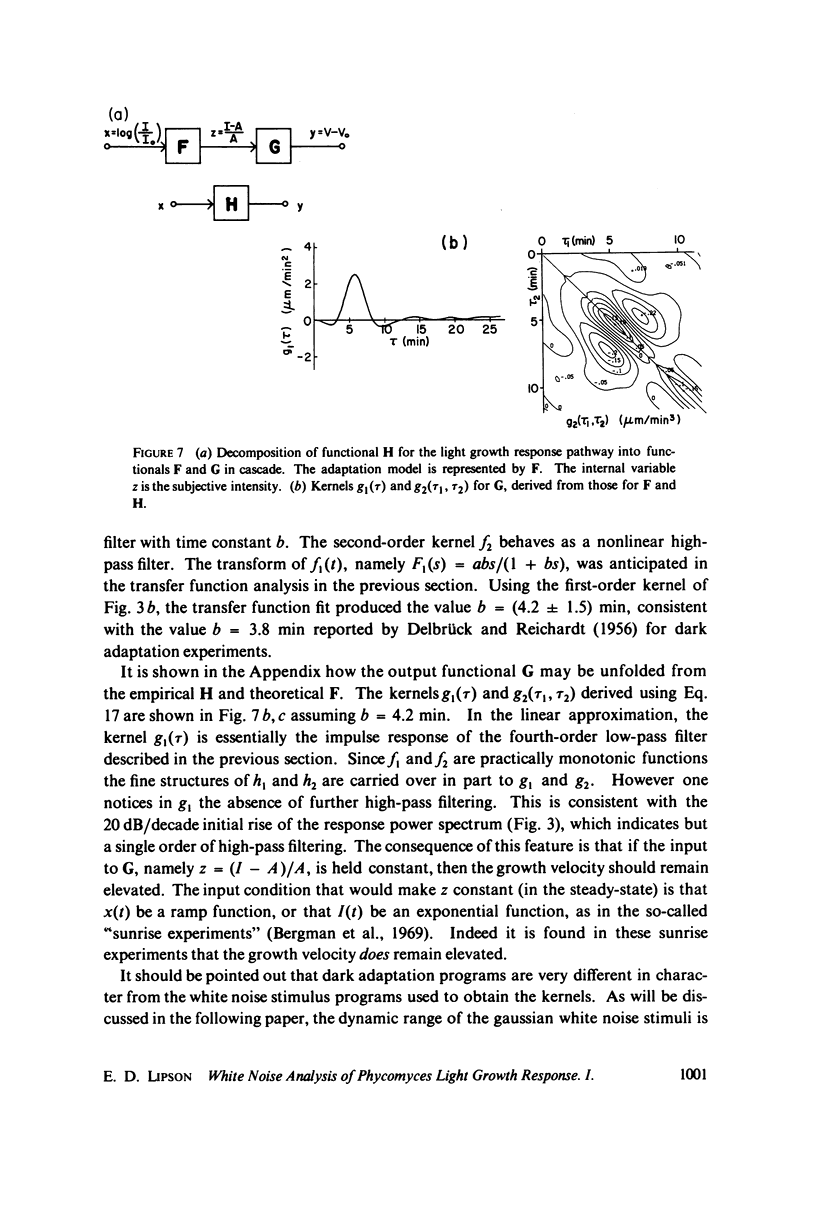
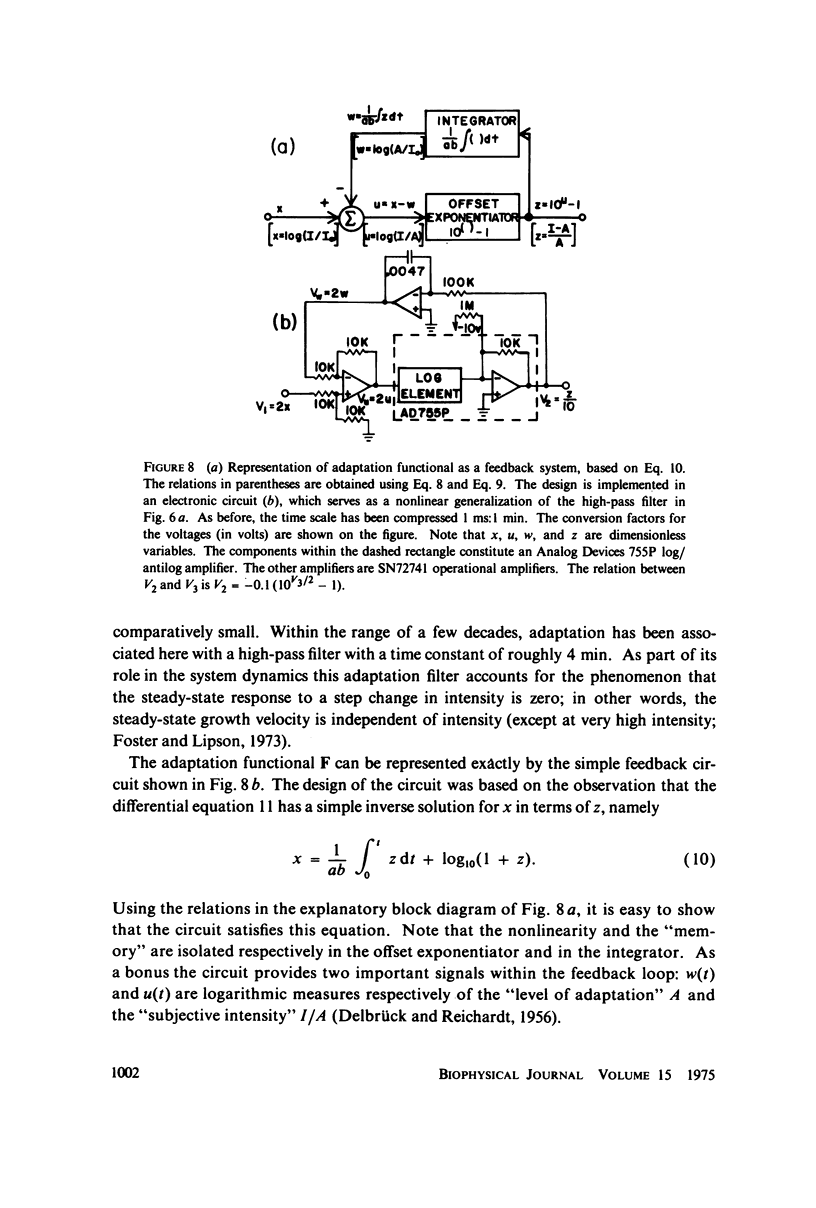
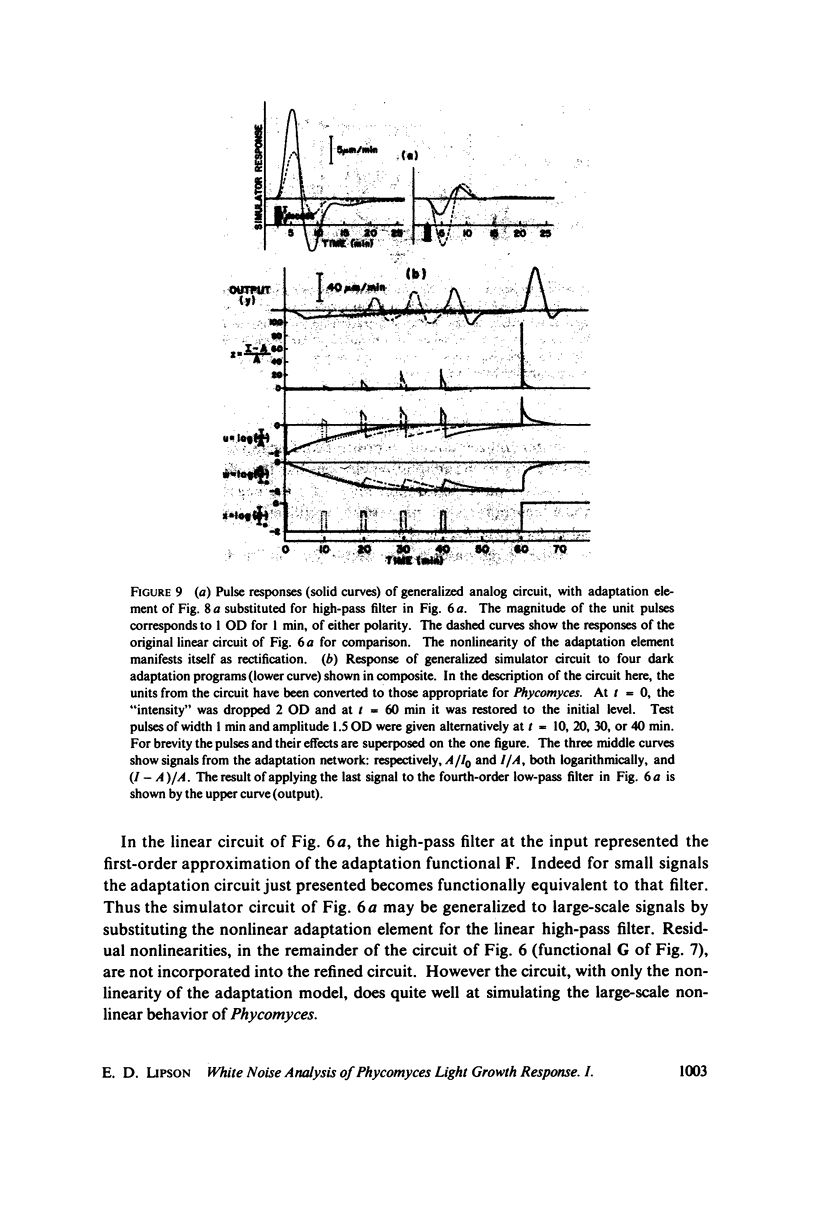
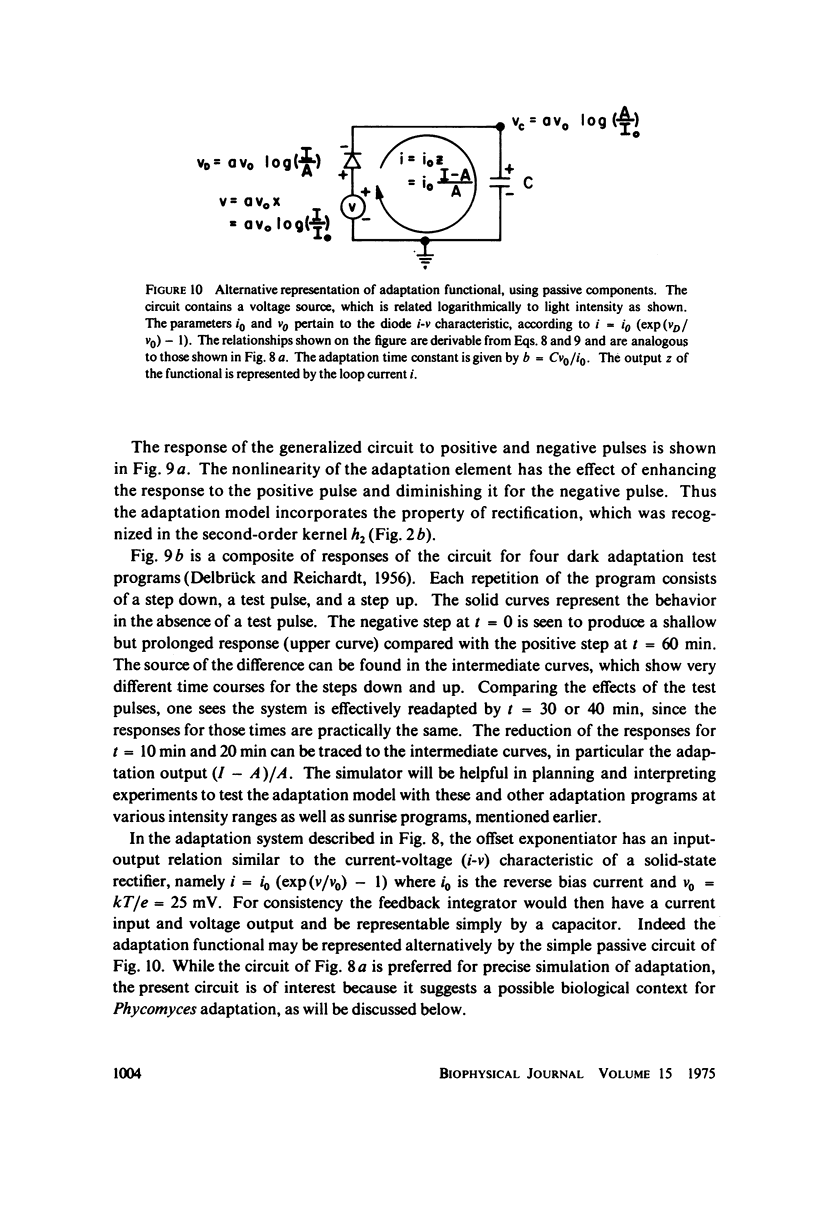
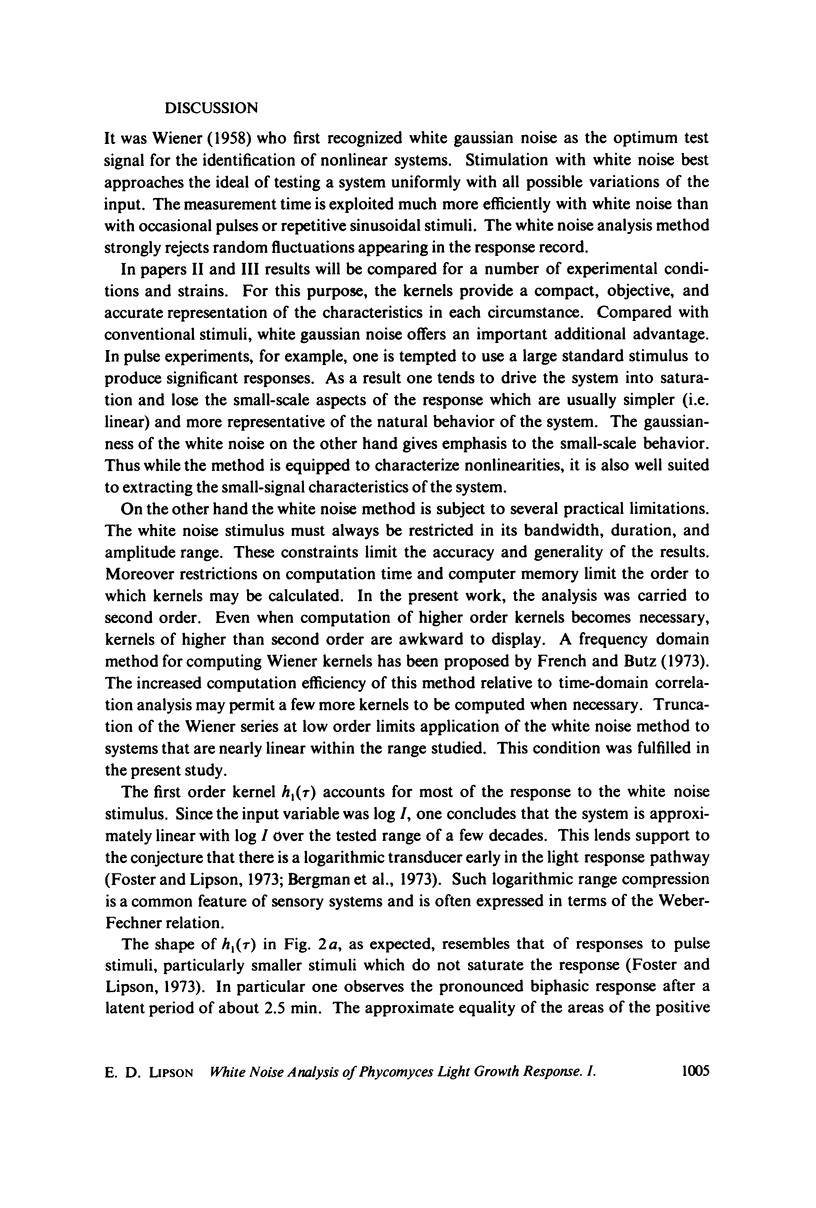
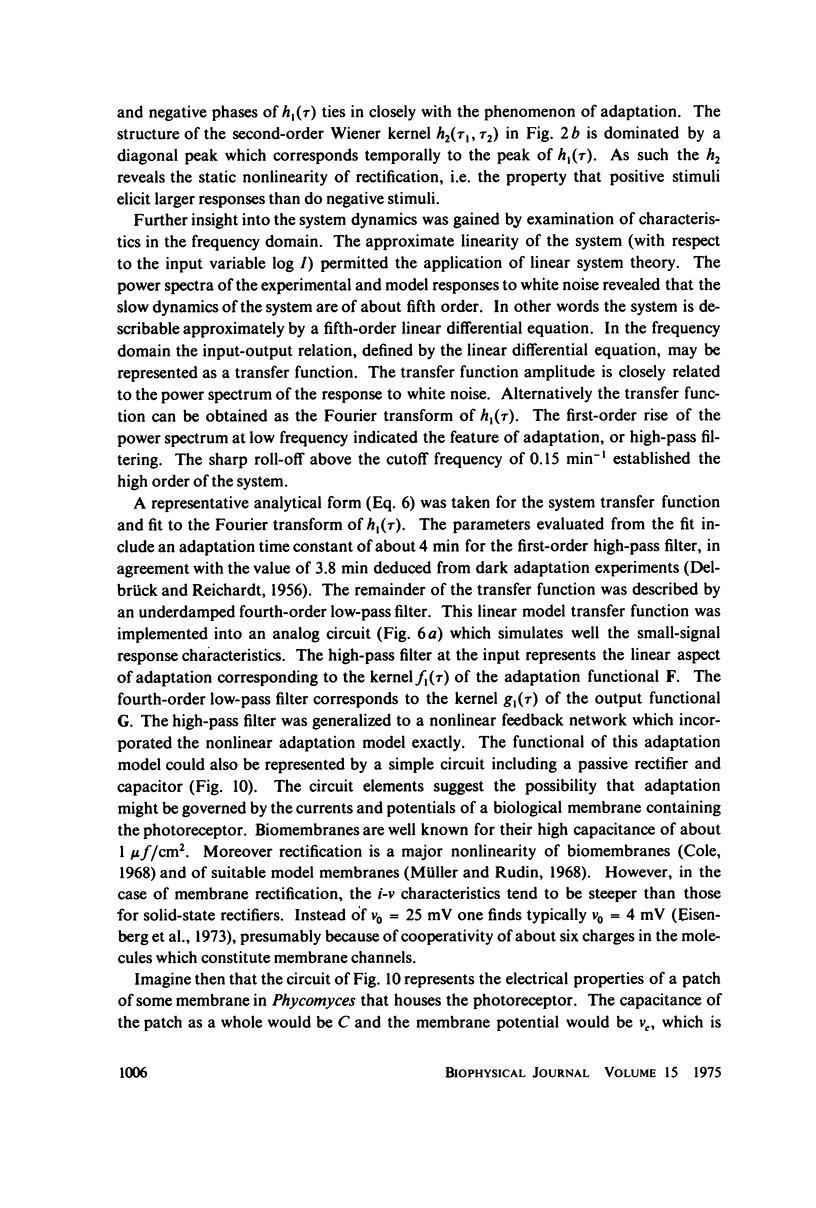
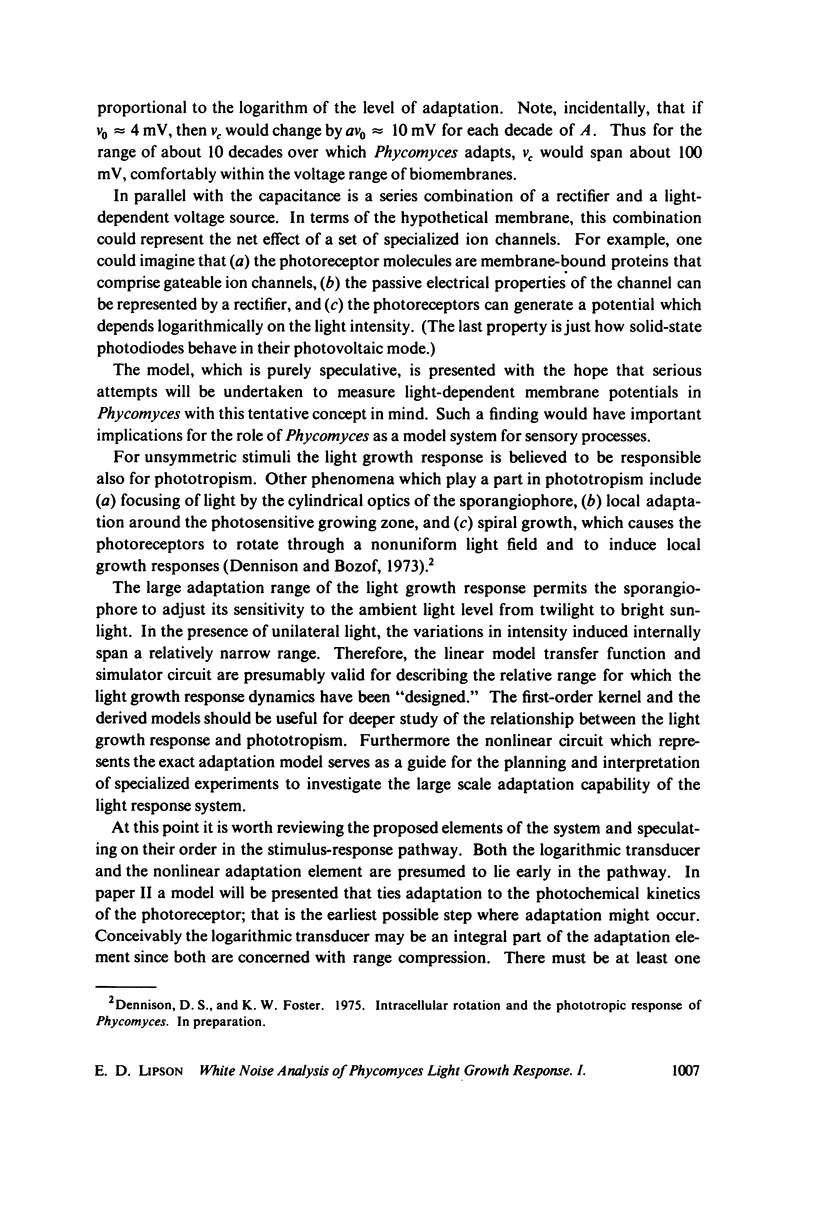
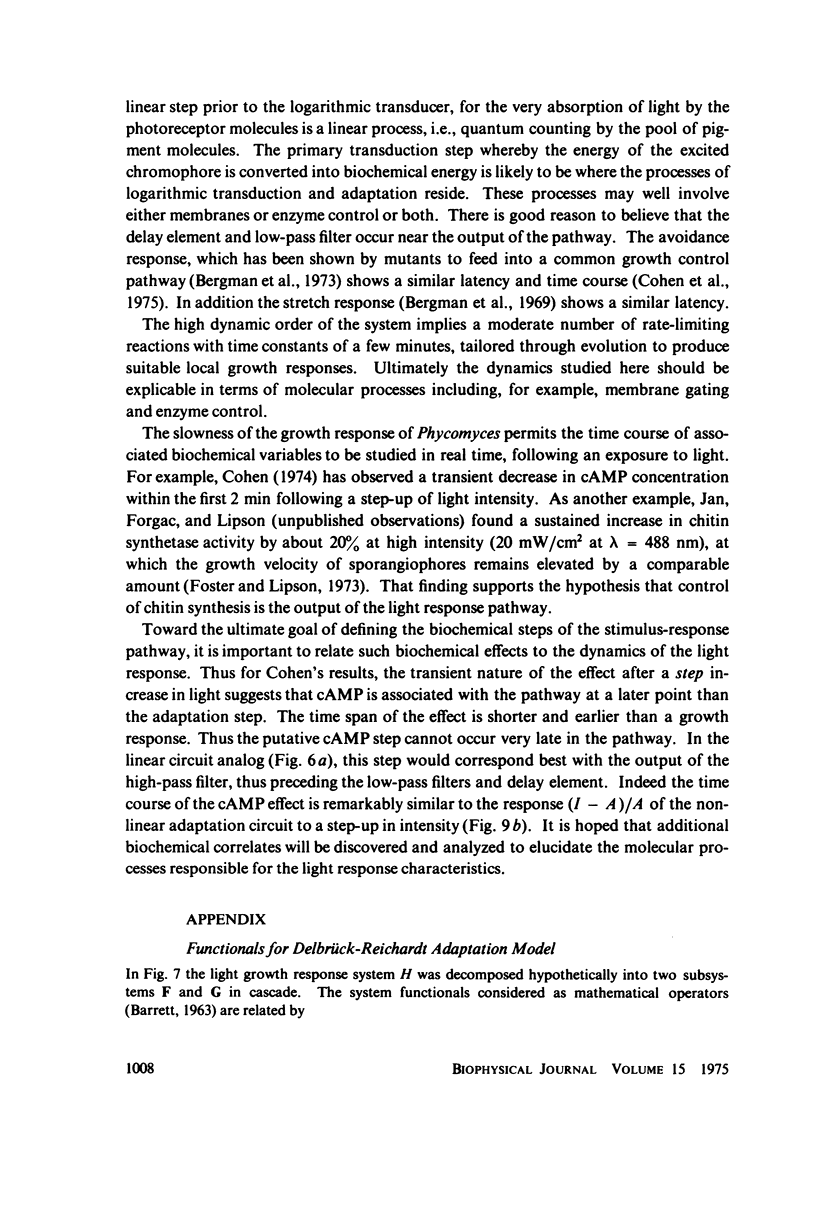

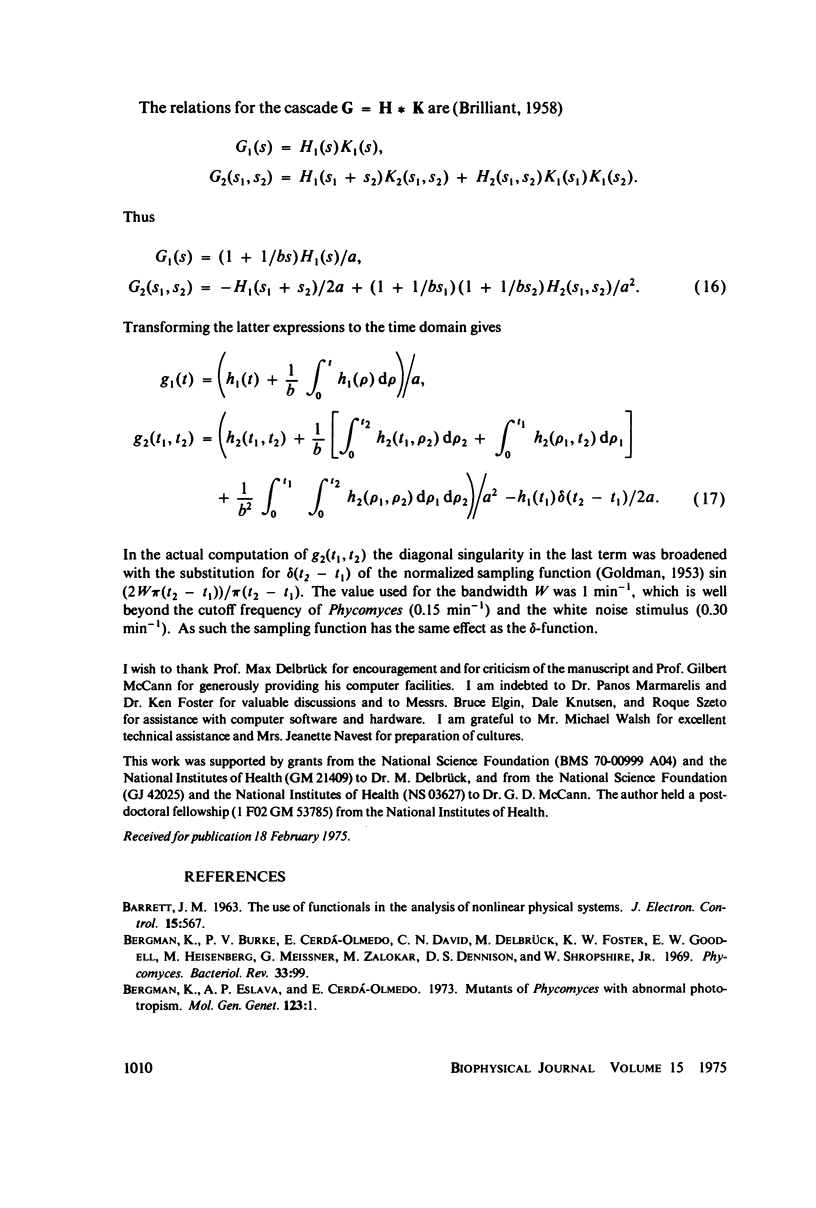
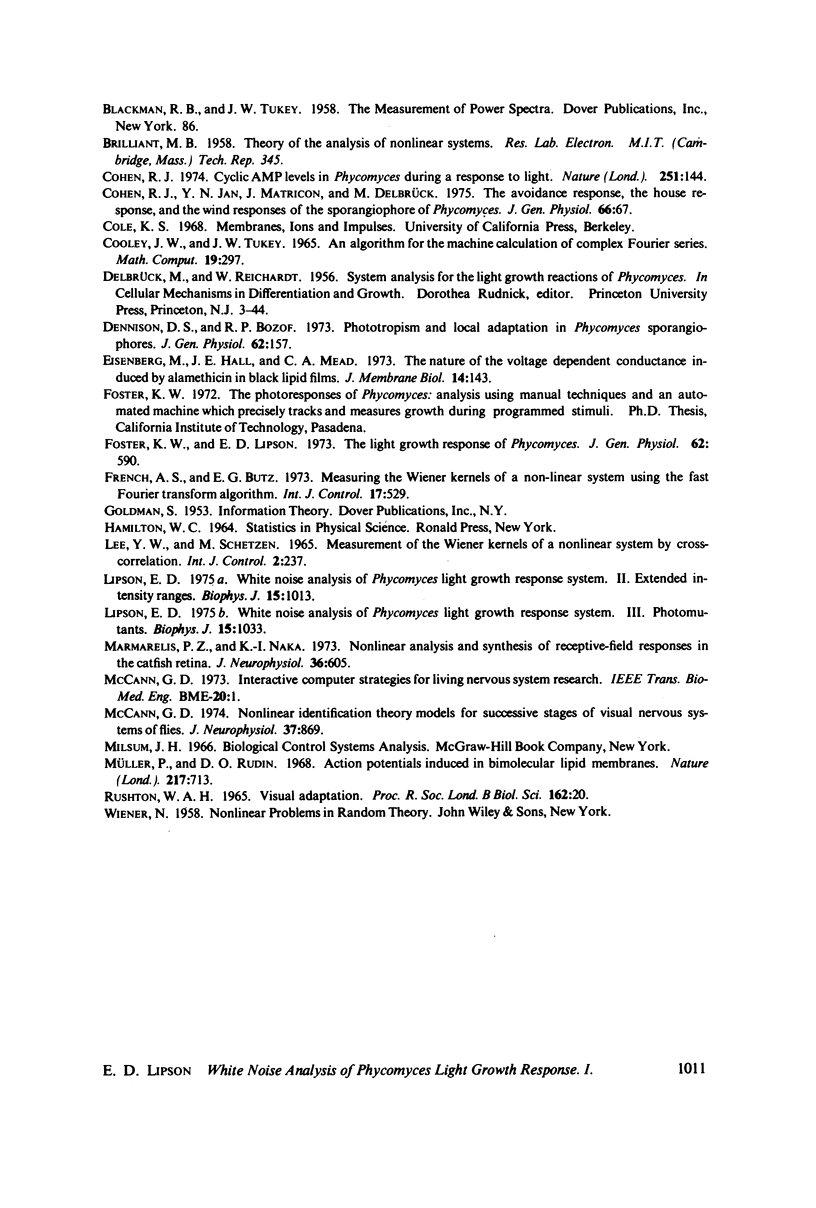
Selected References
These references are in PubMed. This may not be the complete list of references from this article.
- Bergman K., Eslava A. P., Cerdá-Olmedo E. Mutants of Phycomyces with abnormal phototropism. Mol Gen Genet. 1973;123(1):1–16. doi: 10.1007/BF00282984. [DOI] [PubMed] [Google Scholar]
- Cohen R. J. Cyclic AMP levels in Phycomyces during a response to light. Nature. 1974 Sep 13;251(5471):144–146. doi: 10.1038/251144a0. [DOI] [PubMed] [Google Scholar]
- Cohen R. J., Jan Y. N., Matricon J., Delbrück M. Avoidance response, house response, and wind responses of the sporangiophore of Phycomyces. J Gen Physiol. 1975 Jul;66(1):67–95. doi: 10.1085/jgp.66.1.67. [DOI] [PMC free article] [PubMed] [Google Scholar]
- Dennison D. S., Bozof R. P. Phototropism and local adaptation in Phycomyces sporangiophores. J Gen Physiol. 1973 Aug;62(2):157–168. doi: 10.1085/jgp.62.2.157. [DOI] [PMC free article] [PubMed] [Google Scholar]
- Eisenberg M., Hall J. E., Mead C. A. The nature of the voltage-dependent conductance induced by alamethicin in black lipid membranes. J Membr Biol. 1973 Dec 31;14(2):143–176. doi: 10.1007/BF01868075. [DOI] [PubMed] [Google Scholar]
- Foster K. W., Lipson E. D. The light growth response of Phycomyces. J Gen Physiol. 1973 Nov;62(5):590–617. doi: 10.1085/jgp.62.5.590. [DOI] [PMC free article] [PubMed] [Google Scholar]
- Marmarelis P. Z., Naka K. I. Nonlinear analysis and synthesis of receptive-field responses in the catfish retina. I. Horizontal cell leads to ganglion cell chain. J Neurophysiol. 1973 Jul;36(4):605–618. doi: 10.1152/jn.1973.36.4.605. [DOI] [PubMed] [Google Scholar]
- McCann G. D. Nonlinear identification theory models for successive stages of visual nervous systems of flies. J Neurophysiol. 1974 Sep;37(5):869–895. doi: 10.1152/jn.1974.37.5.869. [DOI] [PubMed] [Google Scholar]
- Mueller P., Rudin D. O. Action potentials induced in biomolecular lipid membranes. Nature. 1968 Feb 24;217(5130):713–719. doi: 10.1038/217713a0. [DOI] [PubMed] [Google Scholar]
- RUSHTON W. A. VISUAL ADAPTATION. Proc R Soc Lond B Biol Sci. 1965 Mar 16;162:20–46. doi: 10.1098/rspb.1965.0024. [DOI] [PubMed] [Google Scholar]


